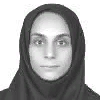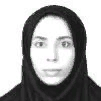International Journal of Intelligent Systems and Applications (IJISA)
IJISA Vol. 6, No. 3, 8 Feb. 2014
Cover page and Table of Contents: PDF (size: 515KB)
Modeling Epileptic EEG Time Series by State Space Model and Kalman Filtering Algorithm
Full Text (PDF, 515KB), PP.26-34
Views: 0 Downloads: 0
Author(s)
Index Terms
Electroencephalogram, Epilepsy, Kalman Filter, Modeling, State Space
Abstract
The human brain is one of the most complex physiological systems. Therefore, electroencephalogram (EEG) signal modeling is important to achieve a better understanding of the physical mechanisms generating these signals. The aim of this study is to investigate the application of Kalman filter and the state space model for estimation of electroencephalogram signals in a specific pathological state. For this purpose, two types of EEG signals (normal and partial epilepsy) were analyzed. The estimation performance of the proposed method on EEG signals is evaluated using the root mean square (RMS) measurement. The result of the present study shows that this model is appropriate for the analysis of EEG recordings. In fact, this model is capable of predicting changes in EEG time series with phenomena such as epileptic spikes and seizures.
Cite This Paper
Atefeh Goshvarpour, Ateke Goshvarpour, Mousa Shamsi, "Modeling Epileptic EEG Time Series by State Space Model and Kalman Filtering Algorithm", International Journal of Intelligent Systems and Applications(IJISA), vol.6, no.3, pp.26-34, 2014. DOI:10.5815/ijisa.2014.03.03
Reference
[1]Berger H. (1929) Über das Elektroenzephalogramm des Menschen, Arch. Psychiat. Nervenkr. 87:527-570.
[2]Niedermeyer E. Lopes da Silva F.H. (1999) Electroencephalography - basic prinicples, clinical Applications and related fields. Urban & Schwarzenberg, 4th edition.
[3]Mormann, F. Kreuz, T. Rieke, C. Andrzejak R.G. Kraskov, A. David, P. Elger, C.E. Lehnertz, K. On the predictability of epileptic seizures. Clinical Neurophysiology 116 (2005) 569–587.
[4]Astrom, K.J.: Maximum likelihood and prediction error methods. Automatica 16, 551–574 (1980)
[5]Tsien CL, Kohans IS, Mclntosh N. Building ICU artifact detection models with more data in less time. Proc AMIA Symp 2001:706–10. [PubMed: 11825277]
[6]Jakob S, Korhonen I, Ruokonen E, Virtanen T, Kogan A, Takala J. Detection of artifacts in monitored trends in intensive care. Comput Methods Programs Biomed 2000;63:203–9. [PubMed: 11064143]
[7]Michael Lenz, M. Musso, M. Linke, Y. Tuscher, O. Timmer, J. Weiller, C. Schelter, B. Joint EEG/fMRI state space model for the detection of directed interactions in human brains—a simulation study. Physiol. Meas. 32 (2011) 1725–1736
[8]Li, Q. Mark, R.G. Clifford, G.D. Artificial arterial blood pressure artifact models and an evaluation of a robust blood pressure and heart rate estimator. BioMedical Engineering OnLine 2009, 8:13.
[9]Li, Q. Mark, R.G. Clifford, G.D. Robust heart rate estimation from multiple asynchronous noisy sources using signal quality indices and a Kalman filter. Physiol Meas. 2008 January; 29(1): 15–32.
[10]Morbidi, F. Garulli, A. Prattichizzo, D. Rizzo, C. Rossi, S. Application of Kalman filter to remove TMS-induced artifacts from EEG recordings. IEEE Transactions on control system technology (2007)
[11]Purdon, P.L. Lamus, C. Hamalainen, M.S. Brown, E.N. A State Space Approach to Multimodal Integration of Simultaneously Recorded EEG and fMRI. IEEE, 2010. 5454–5457.
[12]Mneimneh, M.A. Yaz, E.E. Johnson, M.T. Povinelli, R.J. An Adaptive Kalman Filter for Removing Baseline Wandering in ECG Signals. Computers in Cardiology 2006; 33:253−256.
[13]Bohlin T. (1972) A method of analyzing EEG-signals with changing spectra. Digest of the 3rd International Conference on Medical Physics, Including Medical Engineering. Chalmers Univ. Technol, Gothenburg, Sweden; 1972; xvi+317 pp. p.21-6.
[14]Mathieu M. (1976) Anayse de l'electroencéphalogramme par prédiction linéartre. These, Université Pierre et Marie Curie, Paris.
[15]Duquesnoy A.J. (1976) Segmentation of EEG's by means of Kalman filtering. Progress Report No. PR5, pp.87-92, Institute of Medical Physics TNO, Utrecht.
[16]Blechschmid H. (1982) Die mathematische EEG-Auswertung mit einem schnellen online fähigen Kalman-Filter. PhD-Thesis, University of Technology Graz, Austria.
[17]Jansen B.H., Hasman A., Lenten R., Visser S.L. (1979) Usefulness of autoregressive models to classify EEG-segments. Biomedizinische Technik. 24(9): 216-23.
[18]Jansen B.H., Bourne J.R., Ward J.W. (1981) Autoregressive estimation of short segment spectra for computerized EEG analysis. IEEE Trans. Biomedical Engineering. 28(9).
[19]Akaike, H., Nakagawa, T.: Statistical Analysis and Control of Dynamic Systems. Kluwer, Dordrecht (1988)
[20]Durbin, J., Koopman, S.J.: Time Series Analysis by State Space Methods. Oxford University Press, Oxford, New York (2001)
[21]Kailath, T.: Linear Systems. Information and System Sciences Series. Prentice-Hall, Englewood Cliffs (1980)
[22]Kalman, R.E.: A new approach to linear filtering and prediction problems. J. Basic Engin. 82, 35–45 (1960)
[23]EEG time series are available at www.meb.uni-bonn.de/epileptologie/science/physik/ eegdata.html
[24]Ralph K.L., Andrzejak G., Mormann F., Rieke C., David P., Elger C.E. (2001). Indications of nonlinear deterministic and finite-dimensional structures in time series of brain electrical activity: Dependence on recording region and brain state. Physical Review E, 64, 061907-1-061907-8
[25]Brown RG. (1983) Introduction to Random Signal Analysis and Kalman Filtering. New York: Wiley.
[26]Welch, G.; Bishop, G. Technical Report. Dept. Comp. Sci., University of North Carolina; Chapel Hill: 2004. An introduction to the Kalman filter; p. TR95-041.
[27]Chapter 5. Introduction to Kalman filter, 47-52
[28]Acharya RU, Oliver Faust, Kannathal N, TjiLeng Chua, Swamy Laxminarayan. Nonlinear analysis of EEG signals at different sleep stages. Comput Methods Programs Biomed 2005;80(1):37–45.
[29]Lehnertz K, Elger CE. Can epileptic seizures be predicted? Evidence from nonlinear time series analyses of brain electrical activity. Phys Rev Lett 1998;80:5019–23.
[30]Martinerie J, Adam C, Le van Quyen M, Baulac M, Renault B, Varela FJ. Can epileptic crisis be anticipated? Nat Med 1998;4:1173–6.
[31]Lehnertz K, Elger CE. Spatio-temporal dynamics of the primary epileptogenic area in temporal lobe epilepsy characterized by neuronal complexity loss. Electroencephalogr Clin Neurophysiol 1995;95:108–17.
[32]Goshvarpour A., Goshvarpour A., Rahati S., Saadatian V., Morvarid M. "Phase space in EEG signals of women referred to meditation clinic", Journal of Biomedical Science and Engineering, 4(6), 479-482, 2011.
[33]Elbert, T., Ray, W.J., Kowalik, A.J., Skinner, J.E., Graf, K.E., Birbaumer, N. (1994) Deterministic chaos in excitable cell assemblies. Physiol Rev 74:1-47.
[34]Goshvarpour, A., Goshvarpour, A., Rahati, S., Saadatian, V. (2012) Bispectrum Estimation of Electroencephalogram Signals during Meditation. The Iranian Journal of Psychiatry and Behavioral Sciences (IJPBS)
[35]Valdes, P.A., Jimenez, J.C., Riera, J., Biscay, R., Ozaki, T. (1999). Nonlinear EEG analysis based on a neural mass model. Biol. Cybern. 81, 415-424.

